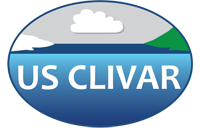Simulating Low Cloud Evolution by Building a Comprehensive Library of Observed Lagrangian Trajectories
Ehsan
Erfani
Desert Research Institute, Reno, Nevada, USA
Poster
Low marine clouds and their response to aerosols are highly sensitive to ambient environmental conditions. To understand these responses across a broad spectrum of conditions, we introduce an innovative approach that encompasses the diverse environmental conditions prevalent in low marine cloud regions. This is achieved by creating a comprehensive library of observed environmental conditions. Utilizing reanalysis and satellite data, over 2200 Lagrangian isobaric (950 hPa) boundary layer forward trajectories are generated for specific locations within the stratocumulus (Sc) deck region of the Northeast Pacific Ocean during the summer seasons of 2018 to 2021. Focusing on 8 important cloud-controlling variables (CCVs), we employ Principal Component Analysis (PCA) to reduce the dimensionality of the data. This technique demonstrates that two principal components account for 43% of the variability among the CCVs. Notably, PCA facilitates the selection of a reduced number of trajectories (e.g., 54) that represent a diverse array of the observed CCV, aerosol, and cloud phase space.

Erfani-Ehsan-poster_0.pdf
(12.78 MB)
Meeting homepage
